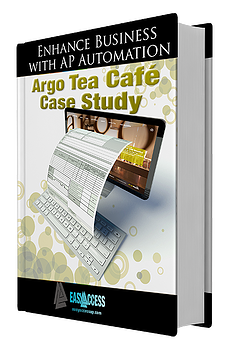How to Bundle Your Content Into Marketing Gemstones


You've probably read a lot about content marketing throughout the social media world and in marketing blogs. Inbound marketing is catching it on seems, more and more data supports real results are being generated. In a recent HubSpot blog article some new ROI statistics were revealed, the results are fantastic.
93% of companies using inbound marketing increase lead generation
Content comes in many forms, it can be a little difficult to understand them all and their proper application. You have questions after all....
- What is the difference between a whitepaper and an eBook?
- Should you use your topic as a blog article or expand it into something more extensive and resourceful?
- Does giving away a trial or demo really help me get more customers?
- Can you really make your own webinar with tools you have one hand?
To help you understand how to position your content we've put together a brief overview of a few of the most effective forms of inbound marketing content. Hopefully you'll be able to better identify which format speaks to your prospects most effectively and you'll be shaping little gems of your own.
Your guide to the many types of online marketing content and how to position eBooks
What: eBooks are designed to break large amounts of information on general topics into smaller segments. They're concept centric, visually heavy, and meant to be a casual skim and scan for valuable information. They allow the reader to digest them quickly and get an overview of how to apply the topic to their needs. Length can vary from 5-100 pages with most in the 15-25 page range.
Why: eBooks are generally designed to be top of funnel resource articles. Prospects are looking for resources to help them make an informed decision on whether or not they should be looking for a solution based on the service. They're simply not ready to buy yet, your goal should be to educate them on the value and application on the service rather than spout off about your ability to deliver. Wait for it....don't jump the gun.
Where: eBooks should be presented as resources for decision making, and offered for free on specifically designed landing pages. These landing pages are really like an advertisement for the information within, and should require the completion of a contact form to access.
White Papers
What: if eBooks are the picture books of inbound marketing, White Papers are more like essays. They are text heavy and data centric, focusing on analysis and statistics. As a much more formal document, White Papers should impress the readers with the expert approach. White Papers should be of comparative length to larger eBooks.
Why: White Papers are also a top of the funnel piece, meant to capture leads and harvest valuable contact information for lead nurturing to maturity. The leads generated with White Papers are most likely not ready to buy, they're still trying to identify whether or not the service or product featured is right for them.
Where: exactly like their cousin the eBook, White Papers need to live behind landing pages. Once the contact form is completed your new lead will be redirected to a thank you page and receive an email notification. Both will contain a link to their new resource, they should be able to instantly access their requested piece of content without waiting or requiring manual follow up.
Webinars
What: A Webinar is a conference or presentation held on the internet, your visitors are able to join via a web conference or online meeting software such as Citrix. This virtual meeting is meant to educate prospects on a specific subject or service, much like eBooks and White Papers.
Why: There are a number of benefits to this format, while they are more difficult to build and plan they allow for real time participation and interaction. They're secure, professional, and scalable, allowing for collaboration not possible with other 'hard copy' solutions.
Where: Webinars are also a bit more flexible for positioning, allowing for top, middle, or bottom of the funnel application. Topic overview for the top, portfolio and case study examination in the middle, and software demos at the bottom. Top of funnel webinars should live behind landing pages, once you've converted leads through the top of funnel alternative webinar placement can be accessed through calendar invites, etc.
Resource Articles
What: Articles are shorter than eBooks or White Papers, generally consisting of 500-700 words. Articles can be longer, like this one and still be effective but be careful that they're not too short. They need to be long enough to add value. Keep in mind the persona of your targeted readers and recognize their pain or need. Provide helpful hints, how to advice, and updates on the latest relevant trends and technologies.
Why: Effective article creation and proper optimization will really boost your web traffic. If you can commit to writing at least weekly and preferably daily you'll really start seeing results. Results in the form of increased web traffic certainly, and leads too if you've built your website with conversions in mind.
Where: Articles are made for blogs, and your blog is where you should publish all articles you write. This will add additional indexed pages to your website if connected correctly, and if you're working to optimize your blog posts you'll reap the rewards of better search engine relevance. The takeaway for blogging is two-fold. You want to be known as an expert in the industry, and you want your website to rank higher on Google. If this sounds good, get your butt in gear and start writing.
Case Studies
What: a little self-explanatory, a case study digs into your past or current client successes.
Why: The idea is that as your prospects vet your credibility and experience they'll be able to connect the dots. You want them to be impressed with your performance and say... "Gee, if they can do that for company X, they could surely kick some butt for me too." As a middle of the funnel offer you're trying to answer the question "Why You".
Where: Case Studies position exactly the same as eBooks, only in the middle of the funnel. Landing pages with contact forms redirecting to Thank You page with PDF attachments is best practice. Make sure you create powerful CTAs for your case studies, you may find that many visitors enter your funnel here, bypassing your top of funnel offers.
Guides & Templates
What: An event planning guide, or a sales lead tracking template are examples of middle of the funnel offers that can really bring value to your prospects. If you're interesting in learning how to blog effectively and you've found some good resources on the topic you might then need help in planning. Our blog editorial calendar template fits the bill, it helps you map out a calendar of topics and publication dates to work backward from.
Why: Templates let you set your prospects up to do it themselves with helpful tools, in the processing cementing you as a resource in the nurturing process.
Where: Just like Case Studies, these middle of the funnel offers should require contact forms on landing pages.
Free Demos & Trials
What: many times you'll need something at the bottom of the funnel to push prospects into clients and if applicable a demo or trial is a great move.
Why: You can feasibly give them something for free to take away the risk, while showing off your fantastic products. If you're trying to make the sale at the bottom of the funnel a trial gets the ball rolling.
Where: email workflow often completes at this stage. You've nurtured to maturity and if this offer doesn't work you'll most likely lose the business or put a sales person on the follow ups. One tip for demos is to set up a web meeting similar to a webinar, and instead of pitching to a group just do a one-on-one with the prospect to walk them through your services and application. They might see a new level of value and jump at the chance to take next steps.
Putting the pieces together
Now all that's left is the planning and hard work! Understanding what tools you have at your disposal and how you can position your intellectual property to maximize views, subscribers, and leads is a big step in the right direction. My advice is that you really just need to start writing and gathering your thoughts and support.
Once you have a rough draft you'll most likely be able to better identify the right finished product. In my experience I have set out to write a quick blog article and 1500 words later I'm considering whether or not to turn it into an eBook instead. Sometimes value just develops, you might surprise yourself with how much you really know and have to share about what you do!
If this article was helpful please share it socially.
